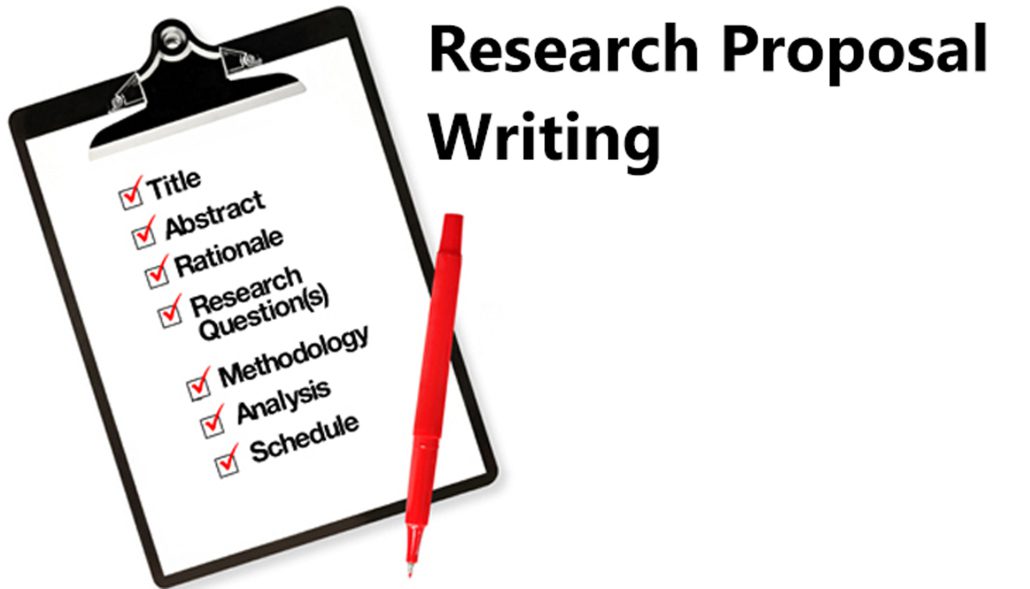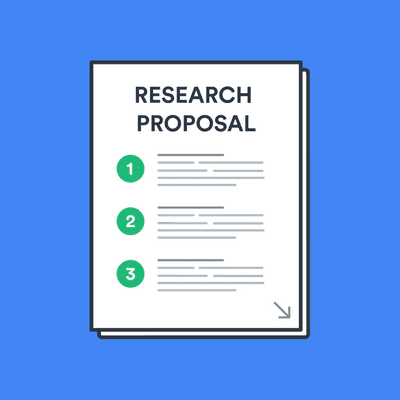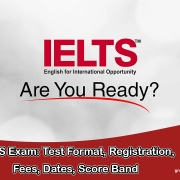How to Write a Scientific Research Proposal + Free Samples 2024
A scientific research proposal is a document that outlines a research project or study that a scientist or researcher intends to conduct. It is generally written to secure funding or support from funding agencies, academic institutions, or other organizations. A research proposal should offer a comprehensive description of the research problem or question, the study’s objectives, the research methods used, the expected results, their significance, and a budget and timeline for the project. It should also demonstrate that the proposed research is new, feasible, and important.
In this article, we will cover the basics of creating a successful scientific research proposal. We will also explain the differences between grant applications, cover letters, and research proposals. Additionally, we will highlight common mistakes that people make when submitting research proposals and provide a simple model or template that you can follow.
Objectives of Scientific Research Proposal
here are some of the goals that a scientific research proposal aims to achieve:
- Clearly state the research problem or question the proposed research project aims to address.
- To provide a thorough and comprehensive review of the relevant literature on the research topic, highlighting previous research on the topic and identifying gaps or limitations in the existing knowledge.
- To clearly define the research objectives and goals and to outline the methodology that will be used to achieve them.
- To demonstrate the significance and relevance of the proposed research project to the field of study and to explain how it will contribute to the existing knowledge in the field.
- To provide a detailed and feasible plan for conducting the research project, including a budget and timeline for the different stages of the project.
- To demonstrate the qualifications and expertise of the research team, including their experience and knowledge of the research topic and methodology.
- To persuade the intended audience (such as funding agencies, supervisors, or colleagues) that the proposed research is valuable, feasible, and likely to succeed.
Scientific Research Proposal Structure
The format of a scientific research proposal may vary slightly depending on the specific requirements of the funding agency or institution to which it is being submitted, but there are typically several key sections that should be included:
- Title page: This should include the title of the proposal, the name of the researcher or research team, the name of the institution, and the date of submission. The format of a scientific research proposal may vary slightly depending on the specific requirements of the funding agency or institution to which it is being submitted, but there are typically several key sections that should be included:
- Abstract: This should be a brief summary of the research project, highlighting the main objectives, methods, and expected outcomes. The format of a scientific research proposal may vary slightly depending on the specific requirements of the funding agency or institution to which it is being submitted, but there are typically several key sections that should be included:
- Introduction: This should provide a background and rationale for the research, including a review of relevant literature and a clear statement of the research question or hypothesis. The length of the introduction section in a research proposal can vary depending on the specific requirements of the funding agency or institution, but it typically ranges between 500-1500 words. The introduction section should provide a detailed overview of the research problem or question, the context and background of the study, and a clear statement of the research objectives and goals. The introduction should also include a review of relevant literature, highlighting previous research on the topic and identifying any gaps or limitations in the existing knowledge.
- Methodology: This should describe the methods used to carry out the research, including the study design, data collection procedures, and data analysis methods. The length of the methodology section in a research proposal can vary depending on the nature and scope of the proposed research, but it typically ranges between 1000-3000 words. The methodology section should provide a detailed description of the research methods used to carry out the study, including the study design, data collection procedures, and data analysis methods. The methodology should be clearly explained and justified, demonstrating that the proposed research is feasible and appropriate for addressing the research question or problem. The methodology should also include a discussion of any potential limitations or challenges that may arise during the research, as well as strategies for addressing these issues. The methodology should be written clearly and concisely, using appropriate technical language and terminology to communicate the proposed research to the intended audience effectively.
- Results and discussion: This section should outline the expected results of the research, their potential implications, and any potential limitations or challenges that may arise.The length of the results and discussion section in a research proposal can vary depending on the specific requirements of the funding agency or institution, but it typically ranges between 500-1500 words. The results and discussion section should outline the expected results of the research, their potential implications, and any potential limitations or challenges that may arise. The section should also provide a discussion of the significance and potential impact of the research, as well as any potential future directions or follow-up studies that may be necessary.
- Budget and timeline: This should provide a detailed breakdown of the expected costs of the research project, including personnel, equipment, supplies, and other expenses, as well as a timeline for the completion of each stage of the project. The length of the budget and timeline section in a research proposal can vary depending on the nature and scope of the proposed research, but it typically ranges between 500-1500 words. The budget and timeline section should provide a detailed overview of the resources that will be required to carry out the proposed research project, including personnel, equipment, supplies, and any other expenses. The budget should be clearly outlined and justified and should demonstrate that the proposed research is feasible and can be carried out within the available resources. The timeline should provide a clear and detailed plan for the different stages of the research project, including data collection, analysis, and dissemination. The timeline should be realistic and achievable and should take into account any potential delays or challenges that may arise during the research.
- References: This should include a list of all sources cited in the proposal, following a consistent citation style. The reference section is an important component of a research proposal, as it demonstrates the quality and depth of the literature review conducted for the proposed research project. A well-formatted and comprehensive reference section can also enhance the credibility and professionalism of the proposal and can help to establish the research as part of a larger body of work in the field.

Common Mistakes in Writing a Scientific Research Proposal
Several common mistakes can occur when writing a scientific research project proposal, including:
- Lack of clarity: A common mistake is not being clear and concise about the research problem or question, the research objectives and goals, and the methodology that will be used to conduct the research.
- Poor organization: The proposal should be well-organized and structured, with clear headings and subheadings that guide the reader through the different sections of the proposal.
- Inadequate literature review: The proposal should include a thorough and comprehensive review of relevant literature, highlighting previous research on the topic and identifying any gaps or limitations in the existing knowledge.
- Failure to demonstrate feasibility: The proposal should demonstrate that the proposed research is feasible and appropriate for addressing the research question or problem and should include a discussion of any potential limitations or challenges that may arise during the research.
- Lack of clarity on expected results: The results and discussion section should outline the expected results of the research and their potential implications, as well as any potential limitations or challenges that may arise.
- Inadequate budget and timeline: The budget and timeline section should provide a detailed overview of the resources that will be required to carry out the proposed research project and should include a realistic and achievable timeline for the different stages of the research project.
- Failure to follow guidelines: The proposal should be written according to the specific guidelines and requirements of the funding agency or institution and should be formatted and structured appropriately.
Editing and proofreading a Scientific Research Proposal
Editing and proofreading are important steps in the process of writing a research proposal. Here are some tips on how to effectively edit and proofread a research proposal:
- Take a break: Before beginning the editing process, take a break from the proposal for a day or two. This will give you fresh eyes when you come back to it.
- Read aloud: Read the proposal aloud to yourself, as this can help you identify awkward phrasing or errors that you might not have noticed otherwise.
- Check for clarity: Make sure that each sentence is clear and easy to understand, and that the proposal flows logically from one section to the next.
- Check for consistency: Make sure that terminology, formatting, and style are consistent throughout the proposal.
- Cut unnecessary words: Be concise and cut out any unnecessary words or phrases.
- Check for grammar and spelling errors: Use a spell checker and grammar checker, but also read the proposal carefully to catch any errors that these tools may miss.
- Get feedback: Have someone else read over the proposal and provide feedback on areas that may need improvement or clarification.
- Format properly: Ensure that the proposal is formatted correctly and that all headings and subheadings are consistent and easy to follow.
- Check references: Make sure that all references are cited correctly and that the reference list is properly formatted.

How to Write a Scientific Research Proposal
I. Starting the Proposal Process
- Preliminary Considerations
Unfortunately, a lot of students and new researchers fail to fully understand the significance of research proposals and fail to appreciate their importance. In any case, it is safe to say that the proposal is the most important aspect of a research project. Even though it somehow managed to get approved, a poorly written proposal has a negative impact on the research project. On the other hand, a strong proposal raises your credibility as a researcher in the eyes of your reviewers while also assisting in the success of the research.
Any kind of research proposal adheres to the citation guidelines, sentence structure, and other writing conventions established by the discipline in question. The content of a research proposal typically ranges in length from three to thirty-five pages with references (and appendices, if necessary). But as with any academic task, carefully read the instructions before beginning to write your proposal. Make sure to explain anything that needs to be explained, and then move forward only after everything is understood.
But first, a word of caution. Maintain strict control over your research methods; a quick scan of the literature will suffice. People frequently fall into the over-research trap, which makes it difficult to write effectively. When the proposal is accepted, the researcher has more time to carry out in-depth research.
- Key Questions to Be Asked
In order to guide your research in the right direction at this point, it is a good idea to ask the following questions:
- What is the topic I want to study?
- Why is it worthwhile to study it?
- What practical or valuable problems will it help solve?
- How does it build upon—and possibly improve—existing research already done about the topic?
- How is it important within the subject areas covered in the course/program? (For students)
- What are the specific tasks that I must plan to do?
- Can I get those tasks done within the time and resources available?
In general, a strong research proposal effectively conveys your familiarity with the subject and demonstrates your intense enthusiasm for the project. Manage it so that your readers are interested in the study and its anticipated results.
II. Research Proposal Writing
- Introduction
In order to secure grant funding for a research project, scholars frequently write a research proposal when enrolling for a research-based postgraduate degree. Graduate and post-graduate students also begin a university dissertation in order to obtain their degree or their Ph.D. Despite the fact that it is only a course assignment, the introduction ought to be thought of as the persuading starting point for a research inquiry or in-depth analysis of the significance of a study topic.
Consider your introduction as a two-four-paragraph narrative that concisely responds to the following questions:
- What is the central problem of the study?
- What is the field of study that is relevant to that core problem?
- What methods should be utilized to analyze that problem?
- Why is this study important?
- What is its significance to the academe and to the world at large?
- Why should someone reading the proposal be concerned about the results of the proposed research?
Take note that most academic institutions and funding agencies do not require an abstract or synopsis before the introduction. However, it is best to check your institution’s guidelines.
- Background and Significance
This section should clearly explain the context of the research proposal and its significance. While some authors choose to include this section in the introduction, some academics prefer to write it separately to enable a proposal’s narrative to flow naturally.
Assuming your readers are busy but want to know the main points of your research problem and the entire study is a good way to approach this section (Kivunja, 2016). Keep in mind that this is not a lengthy essay covering every aspect of your proposed study, but rather a brief text that is sufficient to generate interest in your work.
Keeping these in mind, you should make an effort to address the following significant factors, even though there is no clear-cut guideline for framing a proposed study’s significance:
- Specify the problem of the study and provide a more detailed elaboration of the research purpose. This is very important when the research problem is multifaceted or complex.
- State the rationale of your research proposal and explain, in an engaging way, why it is worthwhile to conduct.
- Present the core problems or issues that will be addressed. This can be made either in questions or statements.
- Underscore how your research can build upon existing assumptions about the proposed study’s problem.
- Elaborate on the details of your methodology to conduct your study, including the key sources, analytical approach, etc.
- Clearly establish the limits of your proposed study to provide a clear research focus.
- Provide definitions of key terms or concepts, if necessary.
C. Review of Prior Studies and Literature
This section, which primarily provides a more deliberate review and synthesis of existing studies pertinent to your proposed research problem, is directly related to the background and significance of your study. This section aims to demonstrate the originality and innovation of your proposed work while also properly situating your proposed study within the overall context of what is being investigated (Abdulai & Owusu-Ansah, 2014).
Because a literature review frequently contains a lot of information, this section must be cleverly organized to help the reader understand the main ideas supporting your proposed research in comparison to those of other scholars. Organizing the literature into major themes or conceptual frameworks is a useful way to achieve this. This strategy is preferable to listing sets of studies in order of chronological or methodical description.
As there are many efficient ways in framing your review of existing related studies, many scholars are following the use of the “five Cs” in writing a literature review (Sudheesh et al., 2016):
- Cite properly to maintain the primary focus on the previous studies related to the research problem. If you are not familiar with citation formats, you can check out our guide on how to cite a research paper.
- Compare the methods, outcomes, models, and arguments mentioned in the literature. Identify the various agreements among the authors.
- Contrast the different themes, controversies, methodologies, and arguments underscored in the literature. Explain the main areas where these authors disagree and debate.
- Critique the literature. Identify the engaging arguments used by scholars. Determine the methodologies that appear most valid, suitable, and reliable.
- Connect the literature to your own particular study area and topic. Discuss whether and how your proposed study draws upon, deviates from, synthesizes, or contributes new knowledge to existing literature.
D. Aims and Research Questions
It’s time to write your research objectives once you’ve chosen a solid research angle. When reading your proposal, consider what you want your readers to take away from it. Spend a lot of time carefully outlining your goals, and if at all possible, try to keep them to one sentence. If you’re having trouble with this, familiarize yourself with what a research question is.
A research objective will help you stay focused and prevent you from drifting off on tangents (Krathwohl & Smith, 2005). Regardless of the specific topic or problem or method you choose, all study proposals must deal with the following questions:
- What do you plan to achieve? Be straightforward and concise in describing the research problem and what topic you are proposing to study.
- Why do you want to conduct the research? You must also provide compelling evidence that your selected topic is worthy of a thorough examination.
- How are you going to conduct the research? Make sure that your proposed study is doable and provide a clear, coherent set of strategies to complete it.
For some institutions, this section can be included as part of the Introduction, usually placed as the last paragraph of that section.
E. Research Design & Methods
Since you are not yet conducting the actual research, this section needs to be properly written and structured. However, it needs to inspire confidence in your readers that it is a worthwhile endeavor.
The overarching goal of this section is to persuade the reader that the suggested analytical approaches and your research design will effectively address the study’s underlying problem(s). It also aims to reassure the reader that the chosen methodologies provide the tools necessary to effectively interpret the anticipated study results. Simply put, the specific research objectives should be directly related to your research design and methodology (Lyman & Keyes, 2019).
By using strong examples from your literature review, you can effectively frame your study’s design. Imitate the effective strategies employed by other researchers. Be specific about the methodology you plan to use to collect data, the techniques you’ll use to analyze that data, and the external validity tests you’ll use.
Include the following information when outlining the techniques you’ll employ:
- Establish the research process you will engage in, including the method you will use for interpreting the outcomes with regard to the problem of the study.
- Do not simply discuss what you plan to accomplish from using the methods you will select, but also describe how you will use the time while utilizing these techniques.
- Note that the methods section is not merely a collection of activities. Since you have selected the approaches, you should also use it to argue why it is the best approach to examine the study problem. Explain this clearly.
- Finally, foresee and acknowledge any possible obstacles and drawbacks when you undertake your research design and provide a plan of action to solve them.
Always keep in mind that there is no perfect method for conducting any kind of research. However, if you strictly adhere to the best practices used by those who conducted pertinent studies and provide the justifications for your choice, you will be able to answer any criticism that might be directed at you.
F. Implications and Contribution to Knowledge
This section is where you contend how you think your proposed study will enhance, change, or expand current knowledge in the research topic that will be investigated. By drawing from your research objectives, explain how the expected outcomes will affect future studies, practice, theory, policymaking, procedures, etc. Discussing study implications typically have either methodological, theoretical, or substantive significance (Abdulai & Owusu-Ansah, 2014).
You can use these guide questions when framing the potential ramifications of your proposed research:
- What could the outcomes signify when it comes to disputing the underlying assumptions and theoretical framework that support the research?
- What recommendations for further studies could emerge from the expected study results?
- How will the outcomes affect practitioners in the real-world context of their workplace?
- Will the study result impact forms of interventions, methods, and/or programs?
- How could the outcomes contribute to solving economic, social, or other types of issues?
- Will the outcomes affect policy decisions?
- How will people benefit from your proposed research?
- What specific aspects of life will be changed or enhanced as an outcome of the suggested study?
- How will the research outcomes be implemented and what transformative insights or innovations could emerge when they are implemented?
This section’s goal is to discuss any gaps or understudied areas in the existing literature and to explain how, if your proposed research is carried out as planned, it will lead to a new understanding of the research problem.
G. Compliance with Ethical Principles
When it comes to the writing style for science, there is no objective better or worse. It is merely a standardized method of information presentation that is designed to make communication easier. Different scholarly disciplines have different ways of publishing their work. So, the protocols established by the institution or agency that the section is intended for depend on.
Nonetheless, it should be noted that fundamental ethical principles guide all scholarly research and writing. If you are observing APA conventions, ethical guidelines are meant to accomplish three objectives, namely, “to protect intellectual property rights, to protect the rights and welfare of research participants, and to ensure the accuracy of scientific knowledge” (APA, 2014, pp. 11).
Every social and behavioral sciences writer (and other scholars who adhere to these principles) advocates these objectives and observes the long-standing standards that their professional groups follow (APA, 2014). Another major ethical APA principle promotes the need to ensure the accuracy of scientific knowledge. The underlying principle behind the (universal) scientific method comprises observation, which can be verified and repeated by other scholars. Accordingly, scholars are expected to not engage in research writing that involves falsifying or fabricating data. Moreover, researchers should not modify study outcomes just to uphold a hypothesis or to remove problematic data to present a more credible report (APA, 2014).
H. Budget
For proposed studies that only involve archival research and straightforward academic research, some universities do not require a detailed budgetary allocation, although some still do. However, if you are looking for research funding, you’ll probably be told to also submit a thorough budget that outlines the costs of all the project’s major components.
Only include expenses in your budget that are pertinent to the costs the funding agency or institution has agreed to cover. For each item, mention:
- The actual cost – present how much money you need to complete the entire study
- Justification – discuss why such a budget item is necessary to complete the research
- Source – explain how the amount was calculated
The act of conducting research is distinct from the act of purchasing ingredients for a meal. So how do you create a budget when the majority of entries are free? Consider these factors to create a proper budget:
- Materials – Will you need access to any software solutions? Does use a technology tool require installation or training costs?
- Time – How much will you need to cover the time spent on your research study? Do you need to take an official leave from your regular work?
- Travel costs – Will you need to go to particular places to conduct interviews or gather data? How much must you spend on such trips?
- Assistance – Will you hire research assistants for your proposed study? What will they do and how much will you pay them? Will you outsource any other activities (statistical analyses, etc.)?
I. Timetable
Another area where one should be practical and direct is the research schedule. The study turnaround time demonstrates that your proposed study can be completed within the permitted window of time, such as the student’s candidacy or the academic year of the university.
Your academic research requirements (thesis, dissertation, or other degree requirements) must be completed in accordance with a timeline that includes a series of goals that must be attained, from preliminary research to final editing. An anticipated completion date needs to be listed for each step.
Additionally, a statement of one’s past progress should be included. Include additional pertinent research-related activities as well, like paper presentations (if applicable). Last but not least, it should be mentioned that the timeline is not a static document and must occasionally be updated.
J. Conclusion
Including a few of your anticipated results in your research proposal’s conclusion is one of the best ways to do it. When you get to this stage, you have to say what conclusions and points you plan to make. Based on the amount of research you’ve done thus far, your reader will be aware that these are anticipated results, and that these expectations will probably change once the full study has been conducted.
However, it’s crucial that you let your reader know what conclusions are possible. This will make it possible for your reader to evaluate the importance and veracity of your project in more detail. Additionally, it will show your reader that you were thoughtful and anticipated the results and implications of your research. You should be able to assess whether you are effectively communicating all pertinent information in your conclusion by writing a research proposal example.
K. Appendices
Researchers who submit research proposals may be required by some funding organizations and academic institutions to include an appendix section. This addendum contains information that supports the views and arguments in the proposal but is not essential to the main narrative of the proposal. Forms and data, such as tables, informed consent, clinical/research protocols, data collection tools, etc., may be included.
If necessary, this supplemental section is also the best place to include one’s most recent curriculum vitae. To prove that you are qualified to carry out the research you propose, you can cite all pertinent academic and professional experience. Presenting relevant research you’ve done will be very helpful, especially if you’ve published research reports, articles, etc.
The best place to include one’s most recent curriculum vitae, if needed, is in this supplemental section. To support your claim that you are qualified to carry out your proposed research, you can cite all pertinent academic and professional experience. Especially if you have published research reports, articles, etc., it will be extremely helpful to present relevant research projects you have completed.
III. Revisions and Proofreading
Before submitting your research proposal, it is crucial to redraft, edit, and proofread it as with any other piece of academic writing (van Ekelenburg, 2010). Before submitting it to the evaluators, if you have the chance, seek feedback and writing tips from a friend, coworker, or supervisor.
Peer review is a quality control process that was created to help researchers become better at what they do, whether they are conducting professional or student research (RPS, 2016). Careful rewriting may be required during the proposal revision process, which can be beneficial in and of itself.
In academic publishing, proposal rejection is a reality, even for the most seasoned scholarly writers. In fact, the success rate of reapplied proposals is considerably higher compared to the first submissions. For instance, at the European Research Council, new applicants have a success rate of 9-10%. Repeat applications tend to have better success rates, from 14-15% (ERC, 2019).
To really boost your chances of getting approval, you might want to consider seeking the help of professional proofreading services to remove grammatical errors, examine your proposal’s structure, and enhance your adherence to the required academic style.
IV. Skills Required for a Research Proposal
Therefore, the skills required to prepare a research proposal are similar to those required to write research (Gilbert, 2006). For ease of understanding, these necessary abilities are here divided into three categories:
- Subject knowledge and research skills. A proposal offers anyone the chance to show your familiarity with existing research trends and your mastery of the topic/subject matter.
- Critical thinking skills. A quality research proposal shows evidence of one’s above-average analytical skills, including the ability to coherently synthesize ideas and integrate lateral and vertical thinking.
- Communication skills. The proposal also demonstrates your proficiency to communicate your thoughts in concise and precise language.
You must keep these abilities in mind as you work on your research proposal. This is because your readers will be looking for examples of how well you write about these significant researchers. These abilities will be crucial in assisting you in receiving funding approval because the success rate for many research grants is less than 20% (e.g., NIH, Welcome, NHMRC, etc.).
Free Sample of Scientific Research Proposal
Here are some excellent research proposal examples for various academic fields and levels of study that you can follow or draw inspiration from:
- Sample proposal for a Clinical Health Project
- Sample proposal for Social Policy and Criminology
- Sample research proposal for Ph.D. Politics 1
- Sample research proposal for Ph.D. Politics 2
- Sample research proposal for Health Librarianship 1
- Sample research proposal for Health Librarianship 2
- Sample research proposal for Early Learning 1
- Sample research proposal for Early Learning 2
Frequently Asked Questions: Scientific Research Proposal
A scientific research proposal is a document that outlines a research project’s objectives, methodology, budget, timeline, and potential impact.
The purpose of a scientific research proposal is to convince others that your proposed research project is worth funding or undertaking. It also serves as a roadmap for the research project itself.
The key elements of a scientific research proposal include a title page, abstract, introduction, literature review, methodology, expected results, budget and timeline, and references.
The length of a scientific research proposal can vary depending on the specific requirements of the audience or funding agency. However, most proposals are between 10-20 pages.
A scientific research proposal should be organized logically, with each section building on the previous one. The proposal should also be divided into clear headings and subheadings.
Choosing a research methodology involves considering the specific research question and objectives, as well as the available resources and data collection methods. Consult with your research supervisor or mentor for guidance.
A strong introduction should provide background information on the research topic and clearly state the research problem or question that the proposal aims to address. It should also provide a rationale for why the research is important.
A literature review involves summarizing and synthesizing previous research on the topic to identify gaps in knowledge and inform the proposed research. It should be organized logically and cite all sources used.
A budget and timeline should be realistic and include all necessary resources and costs for carrying out the research project. It should also provide a clear timeline for completing the research.
Proofreading involves carefully reviewing the proposal for errors in grammar, spelling, and formatting. It’s important to take a break from the proposal and come back with fresh eyes, as well as to have someone else read it over for feedback.








Leave a Reply
Want to join the discussion?Feel free to contribute!